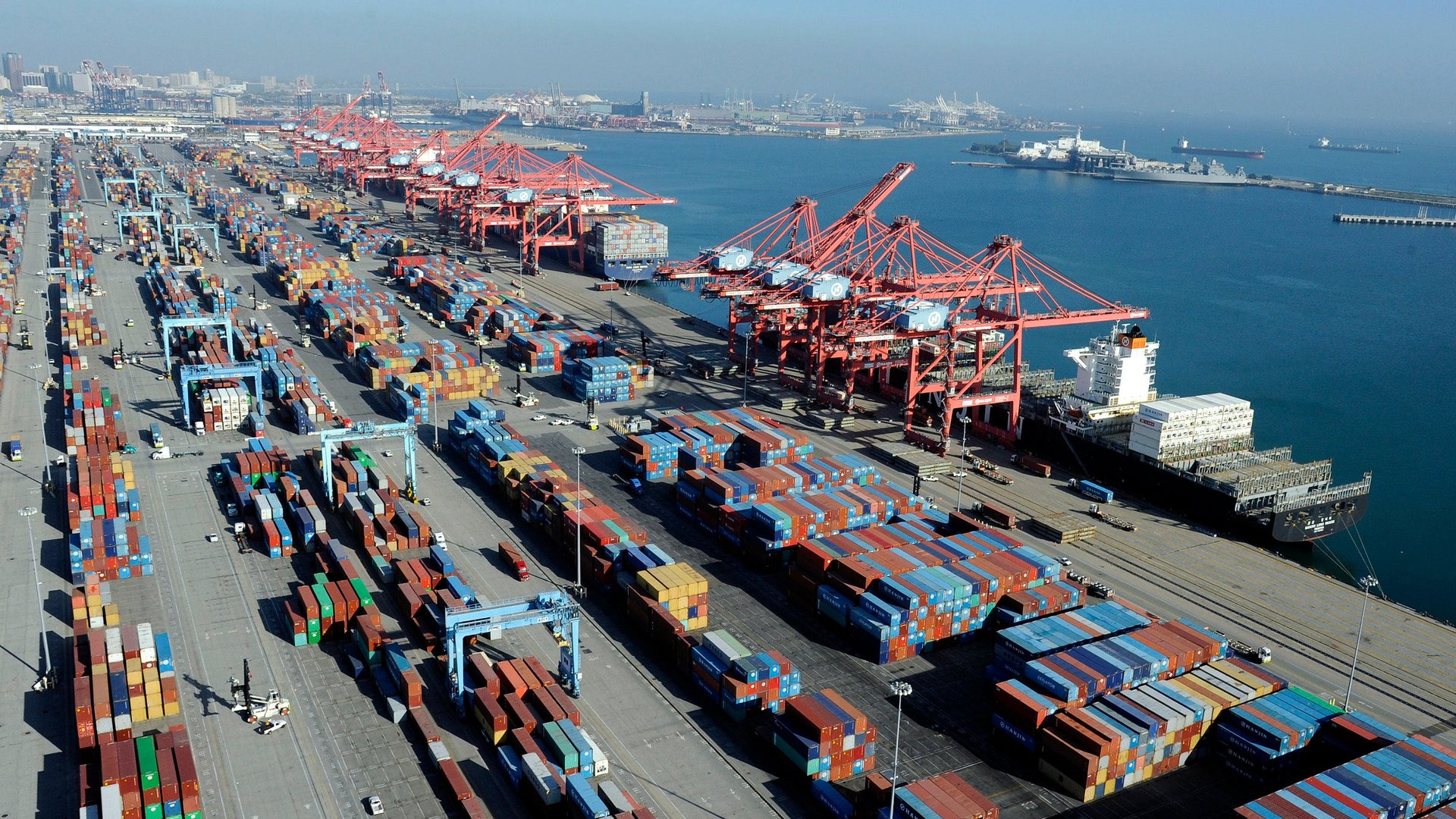Donald Trump has a plan to boost the trade deficit in one easy step
The Trump administration has reportedly asked government accountants to reconsider how they calculate the US balance of trade—a move widely seen as a prelude to attacks on US free trade deals and the global supply chains of US companies.


The Trump administration has reportedly asked government accountants to reconsider how they calculate the US balance of trade—a move widely seen as a prelude to attacks on US free trade deals and the global supply chains of US companies.
At the heart of the matter are goods that are imported into the country and quickly exported again, with little value added. Examples include clothing and toys imported wholesale by US retailers but destined for sale in Canada or Mexico; luxury goods imported on consignment but exported again when they fail to sell; or components passing through the country before they’re assembled or modified abroad.
“A lot of it has to do with the logistics and returns to scale,” says Caroline Freund, an economist at the Peterson Institute for International Economics. “The big ships are headed for the US ports. If you’re Wal-Mart, you bring things in through customs, even if you are going to ship it out through Mexico or Canada. If you are a big auto company, you might import a lot of parts into the US, but then end up shipping them to your partner in NAFTA.”
When the US Census bureau collects data on American trade, it includes this category of exports—known as re-exports, or foreign exports—in its aggregate total, just as it includes them when they are imported to the US.
For several years, critics of free trade deals, mostly on the left, have pushed for re-exports to be excluded from the grand total of US exports, arguing that it falsely inflates American trade gains. Now the Trump administration is considering a decision to make this method official.
It’s not a completely wild idea, but only if you could ensure that you’re excluding re-exports from the import side of the ledger, as well. But that import data is difficult to measure, so the net result would be to distort trade figures to make the US deficit—which rose 0.4% to about $500 billion last year—look larger than it really is. In 2016, about 15% of US exports were re-exports, worth more than $200 billion; about half of those re-exports were to Canada and Mexico, enabled by NAFTA, the free trade agreement.
Boosting the trade deficit would enable the Trump administration’s demands to renegotiate NAFTA, which rely on portraying the agreement as a bad deal for the US. On its face, foreign companies selling more to the US than they buys from American firms may seem like a problem.
But that kind of analysis doesn’t reflect the larger realities of the global economy. A large US trade deficit isn’t a sign of bad trade policy, but a reflection of the fact that investment in the US still outstrips savings, especially compared to countries like Japan and Germany. So long as the US dollar remains a key global currency and policymakers act to keep it strong—as the Fed will by raising interest rates this year—foreign investors will pour money into the American economy, ensuring a constant trade deficit.
The real question to ask, when it comes to the answering the most vital questions of jobs and industrial capacity, is whether the US is adding value to the global supply chain.
This provides rosier news: When looking at value-added trade, US deficits with closely-integrated economies like Mexico, Canada and China actually fall by as much as 25%. And when it comes to actually consuming imports, the US actually relies less on imports than other advanced economies: Just 12.3% of US domestic consumption in 2011 came from foreign-made goods, the fourth-lowest among the developed countries surveyed.